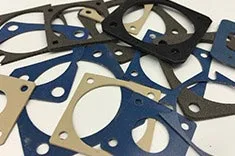EMI Shielding Products
- Custom Gasket Fabrication
- Connector Gaskets
- Bonded O Ring
- Custom Gaskets
- Conduct-O-Knit Knitted Wire Mesh
- Conduct-O-Seal Combo Gasket
- Conduct-O-Elastomer
- Conduct-O-Seal Oriented Wire in Silicone Gasket Material
- Conduct-O-Mesh Tape
- Conduct-O-Foam
- Conduct-O-Bond
- Optical Filters For Electronic Displays
- Shielded Vent Panels
- ESC Board Level Shielding
- 300 Series
Electromagnetic Interference Shielding in the Advancements of Nanotechnology: The Benefits of Shielding EMI

Shielding EMI
Nanotechnology has ushered in transformative shifts across multiple disciplines, including electronics, healthcare, and science. Concurrent with these advances is the amplification of challenges related to Electromagnetic Interference (EMI). The miniaturization of electronic components leads to heightened EMI susceptibility, necessitating rigorous mitigation strategies. Shielding EMI is thus an integral focal point in nanotechnology-based research and application development.
Nanotechnology and Electromagnetic Interference
The progressive miniaturization of nanotechnology fosters unprecedented capabilities in electronic systems. However, this reduction in scale leads to components being situated near, thereby elevating the risks associated with EMI.
- The condensation of electrical components results in a higher density of electromagnetic fields.
- Healthcare devices incorporating nanotechnology face elevated risks of malfunction due to EMI.
- The close-quarter arrangement of multiple nanoscale devices in populated areas can lead to compounded EMI effects.
Given these intricacies, mitigating EMI is indispensable for the reliable functioning of nanoscale devices, particularly those deployed in critical applications such as healthcare and communications.
Materials Science Contributions to EMI Shielding at the Nanoscale
The limitations of conventional materials for EMI shielding become accentuated at the nanoscale. Researchers have thus been investigating specialized materials engineered explicitly for nanoscale applications.
- Nanostructured graphene exhibits high electrical conductivity and mechanical robustness, making it a viable candidate for EMI shielding.
- Conductive polymers fabricated into nanoscale EMI gaskets are gaining prominence due to their effectiveness and adaptability.
- Carbon nanotube-based composites have demonstrated a favorable balance between low mass and high EMI shielding efficacy.
The development and application of these materials contribute to preserving the advantages of miniaturization while countering the elevated susceptibility to EMI inherent to nanoscale devices.
Regulatory and Standardization Landscape in Nanoscale EMI Shielding
The pervasiveness of nanotechnology applications across diverse sectors necessitates the institution of rigorous standards and regulations for EMI shielding.
- International bodies, such as IEEE, are formulating protocols explicitly aimed at evaluating EMI shielding in nanoscale applications.
- Sectors at the frontier of nanotechnology, including nanomedicine and nanoelectronics, require specialized EMI shielding strategies.
- The advent of consumer electronics incorporating nanotechnology underscores the urgency of reliable and standardized EMI shielding solutions.
The establishment of comprehensive standards is crucial for the safe and productive deployment of nanotechnology, given its widening scope and the associated amplification of EMI-related challenges. The interrelationship between nanotechnology and EMI shielding is both intricate and crucial. As nanotechnology paves the way for groundbreaking applications across multiple disciplines, the challenges related to EMI assume increasing importance. The investigation into specialized materials for EMI shielding at the nanoscale and the emergence of targeted regulatory frameworks are vital for the future progress and safe deployment of nanotechnology innovations.



